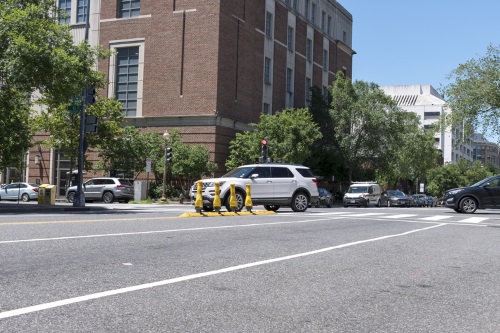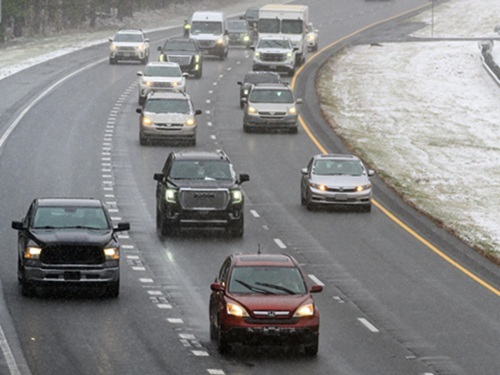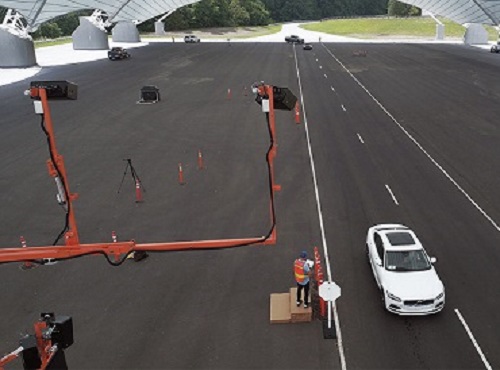Roadside cameras and telematics data could provide a “more complete picture” of cellphone use by motorists, according to two new studies from the Insurance Institute for Highway Safety.
[Above photo by IIHS]
Observers relying on photographs taken with roadside cameras were almost as good as in-person monitors at identifying drivers who were using their cellphones, one IIHS study showed. Concurrently, a second study demonstrated that the telematics data collected by the safe-driver apps that are gaining ground in the insurance industry could provide more details about when and how drivers are using their devices.
“One of the challenging aspects of combating cellphone-related distraction is the absence of good information about where, when and how drivers are using their phones,” noted IIHS President David Harkey in a statement. “Roadside cameras and telematics could help fill in the gaps, improving our understanding of how cellphones affect crash risk.”

Currently, the most up-to-date information about driver cellphone use comes from an annual National Highway Traffic Safety Administration roadside survey, which uses human observers positioned at specific intersections from 7 a.m. to 6 p.m. over several weeks every summer to record motorist cellphone use.
While IIHS said those surveys “help to identify trends” like a decline in the percentage of drivers holding phones to their ears, they only record information about drivers who are stopped in traffic in places where it’s feasible to station a human observer.
Meanwhile, research by IIHS indicates cameras could be deployed on freeways and in other locations where it is too dangerous to station a human observer, allowing better monitoring of cellphone use in fast-moving traffic. If artificial intelligence software can be used to screen for likely cases of distraction, cameras might also allow for the collection of data more frequently or in greater volumes.
Eventually, the evidence they provide could also be used to enforce local laws against talking, texting or otherwise manipulating a cellphone while driving — a program that is already underway in Australia.
Meanwhile, telematics could provide robust information about when and how drivers are using their cellphones, the second IIHS study shows. That would give researchers and policymakers a much clearer picture of the connection between cellphone-based distraction and crash risk.
“Telematics data offer a lot more nuanced information than we have now because the information is collected all day long, from a large number of drivers over the entire duration of their drives,” said IIHS Senior Researcher Ian Reagan, the lead author of the second study.
 Nation
Nation
Registration Open for AASHTO’s Winter Rail Meeting
December 19, 2025 Nation
Nation

